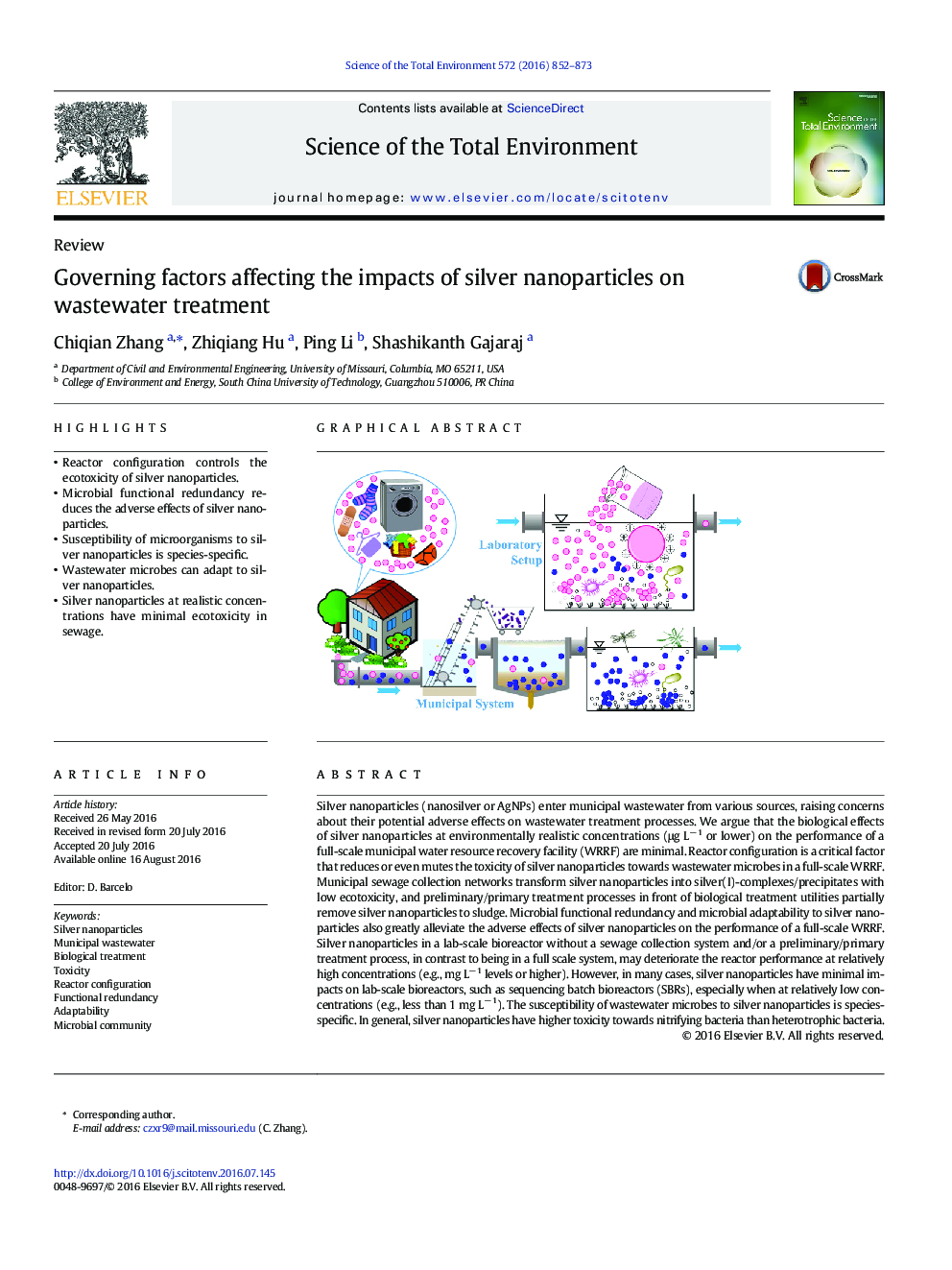| Article ID | Journal | Published Year | Pages | File Type |
|---|---|---|---|---|
| 6320690 | Science of The Total Environment | 2016 | 22 Pages |
â¢Reactor configuration controls the ecotoxicity of silver nanoparticles.â¢Microbial functional redundancy reduces the adverse effects of silver nanoparticles.â¢Susceptibility of microorganisms to silver nanoparticles is species-specific.â¢Wastewater microbes can adapt to silver nanoparticles.â¢Silver nanoparticles at realistic concentrations have minimal ecotoxicity in sewage.
Silver nanoparticles (nanosilver or AgNPs) enter municipal wastewater from various sources, raising concerns about their potential adverse effects on wastewater treatment processes. We argue that the biological effects of silver nanoparticles at environmentally realistic concentrations (μg Lâ 1 or lower) on the performance of a full-scale municipal water resource recovery facility (WRRF) are minimal. Reactor configuration is a critical factor that reduces or even mutes the toxicity of silver nanoparticles towards wastewater microbes in a full-scale WRRF. Municipal sewage collection networks transform silver nanoparticles into silver(I)-complexes/precipitates with low ecotoxicity, and preliminary/primary treatment processes in front of biological treatment utilities partially remove silver nanoparticles to sludge. Microbial functional redundancy and microbial adaptability to silver nanoparticles also greatly alleviate the adverse effects of silver nanoparticles on the performance of a full-scale WRRF. Silver nanoparticles in a lab-scale bioreactor without a sewage collection system and/or a preliminary/primary treatment process, in contrast to being in a full scale system, may deteriorate the reactor performance at relatively high concentrations (e.g., mg Lâ 1 levels or higher). However, in many cases, silver nanoparticles have minimal impacts on lab-scale bioreactors, such as sequencing batch bioreactors (SBRs), especially when at relatively low concentrations (e.g., less than 1 mg Lâ 1). The susceptibility of wastewater microbes to silver nanoparticles is species-specific. In general, silver nanoparticles have higher toxicity towards nitrifying bacteria than heterotrophic bacteria.
Graphical abstractDownload high-res image (360KB)Download full-size image
